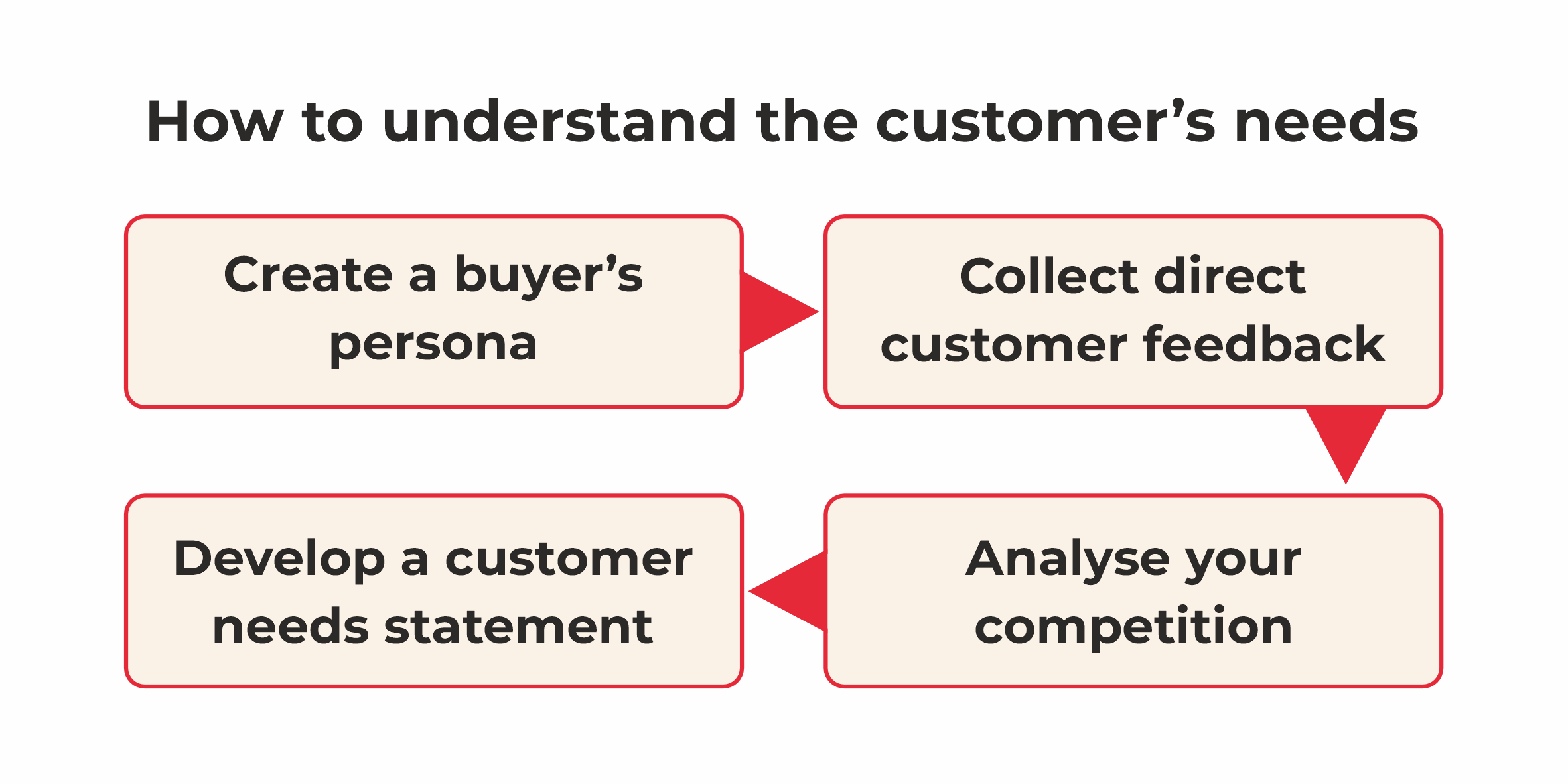Working professionals
Domains
Doctorate
Artificial Intelligence
Data Science
Gen AI & Agentic AI
MBA
Marketing
Management
Education
Project Management
Doctorate
For All Domains
IIITB & IIM, Udaipur
Chief Technology Officer & AI Leadership ProgrammeSwiss School of Business and Management
Global Doctor of Business Administration from SSBMEdgewood University
Doctorate in Business Administration by Edgewood UniversityGolden Gate University
Doctor of Business Administration From Golden Gate UniversityRushford Business School
Doctor of Business Administration from Rushford Business School, SwitzerlandGolden Gate University
MBA to DBA PathwayLeadership / AI
Golden Gate University
DBA in Emerging Technologies with Concentration in Generative AIGolden Gate University
DBA in Digital Leadership from Golden Gate University, San FranciscoArtificial Intelligence
Degree / Exec. PG
IIIT Bangalore
Executive Diploma in Machine Learning and AIOPJ Global University
Master’s Degree in Artificial Intelligence and Data ScienceLiverpool John Moores University
Master of Science in Machine Learning & AIGolden Gate University
DBA in Emerging Technologies with Concentration in Generative AIExecutive Certificate
IIITB & IIM, Udaipur
Chief Technology Officer & AI Leadership ProgrammeIIIT Bangalore
Executive Programme in Generative AI for LeadersupGrad | Microsoft
Gen AI Foundations Certificate Program from MicrosoftupGrad | Microsoft
Gen AI Mastery Certificate for Data AnalysisupGrad | Microsoft
Gen AI Mastery Certificate for Software DevelopmentupGrad | Microsoft
Gen AI Mastery Certificate for Managerial ExcellenceOffline Bootcamps
upGrad
Data Science and AI-MLData Science
Degree / Exec. PG
O.P Jindal Global University
Master’s Degree in Artificial Intelligence and Data ScienceIIIT Bangalore
Executive Diploma in Data Science & AILiverpool John Moores University
Master of Science in Data ScienceExecutive Certificate
upGrad | Microsoft
Gen AI Foundations Certificate Program from MicrosoftupGrad | Microsoft
Gen AI Mastery Certificate for Data AnalysisupGrad | Microsoft
Gen AI Mastery Certificate for Software DevelopmentupGrad | Microsoft
Gen AI Mastery Certificate for Managerial ExcellenceupGrad | Microsoft
Gen AI Mastery Certificate for Content CreationOffline Bootcamps
upGrad
Data Science and AI-MLGen AI & Agentic AI
Gen AI & Agentic AI
Masters

Paris School of Business
Master of Science in Business Management and TechnologyO.P.Jindal Global University
MBA (with Career Acceleration Program by upGrad)Edgewood University
MBA from Edgewood UniversityO.P.Jindal Global University
MBA from O.P.Jindal Global UniversityGolden Gate University
MBA to DBA PathwayExecutive Certificate
IMT, Ghaziabad
Advanced General Management ProgramMarketing
Executive Certificate
upGrad | Microsoft
Gen AI Foundations Certificate Program from MicrosoftupGrad | Microsoft
Gen AI Mastery Certificate for Content CreationOffline Bootcamps
upGrad
Digital MarketingManagement
Degree
O.P Jindal Global University
MSc in International Accounting & Finance (ACCA integrated)
Paris School of Business
Master of Science in Business Management and TechnologyGolden Gate University
Master of Arts in Industrial-Organizational PsychologyExecutive Certificate
Education
Education
Northeastern University
Master of Education (M.Ed.) from Northeastern UniversityEdgewood University
Doctor of Education (Ed.D.)Edgewood University
Master of Education (M.Ed.) from Edgewood UniversityProject Management
Accreditation Certifications
-7f4b4f34e09d42bfa73b58f4a230cffa.webp&w=128&q=75)
Knowledgehut
Project Management Masters Certification ProgramKnowledgehut
Change ManagementKnowledgehut
Project Management TechniquesKnowledgehut
Oracle Primavera P6 V18.8-7f4b4f34e09d42bfa73b58f4a230cffa.webp&w=128&q=75)
Knowledgehut
PMP® CertificationKnowledgehut
PRINCE2® FoundationKnowledgehut
PRINCE2® PractitionerFresh graduates
Domains
Data Science
Management
Marketing
Data Science
Bootcamp
Offline Bootcamps
upGrad
Data Science and AI-MLManagement
Marketing
Bootcamp
upGrad Campus
Advanced Certificate in Performance MarketingOffline Bootcamps
upGrad
Digital Marketing- Study abroad
- Offline centres
More
RESOURCES
BlogsCutting-edge insights on education
WebinarsLive sessions with industry experts
TutorialsMaster skills with expert guidance
Learning GuideResources for learning and growth
COMPANY
Careers at upGradYour path to educational impact
Hire from upGradTop talent, ready to excel
upGrad for BusinessSkill. Shape. Scale.
Experience centerImmersive learning hubs
About usOur vision for education
OTHERS
Refer and earnShare knowledge, get rewarded
Sales Technique Courses Online
At the heart of any modern sales technique to persuade prospects to make a purchase, making sales training is a prerequisite for any salesperson. Read more below.
20(1)-70997669bd1a4ba2b565901e0eae2fa5%20(1)-de9c82be352d44bcb6a48fecf60b4465.jpeg&w=3840&q=75)
Mastering Sales Course Overview
Organisations focusing on sales to generate a significant part of their revenue rely heavily on sales techniques and methods to enhance efficiency. Regardless of the sales technique, the goal is to build sustainable relationships with clients so that they keep returning to the business to make purchases.
Traditional sales techniques are least likely to cut through the current business landscape. Customers are spoilt for choice, with almost every company giving their best foot forward to sell their products and services. Not just that, customers today are more informed than ever and have multiple options available to them. Naturally, they wouldn’t think twice before rejecting a brand and moving on to another one, probably because it was marketed and sold better.
At the heart of any modern sales technique to persuade prospects to make a purchase, making sales training is a prerequisite for any salesperson.
A sales technique is a selling method that sales professionals use to boost sales and increase revenue. It encompasses a wide range of selling strategies to sell more effectively and close deals faster, and these methods can be applied to almost any sales process.
Unlike a sales process that covers the steps to convert an unqualified prospect into a customer, a sales technique focuses on a specific aspect of the sales process. The sales technique deals with the methodologies and communication skills one can apply to different parts of the sales process.
Even when a business closes deals and brings in sales, marketers may need to boost demand and increase sales in the short term, and this is where sales promotion techniques come into play. A strategic sales promotion involves a business using short-term campaigns to create demand for a product or service and trigger an increase in sales to reach a marketing goal. Apart from boosting sales and revenue, the benefits of running a sales promotion include customer loyalty and insights into customer buying behaviour.
The biggest take-home lesson from any sales and marketing management course is that you must know and understand your customer's needs, whether selling to a business or directly to clients. Every business holds its unique selling proposition (USP), or the reason customers should buy from them and not their competitors. While USP is dynamic and keeps changing with the market, its core idea remains the same - it is driven by what customers potentially look for when making a buying decision.
Knowing your customers involves tailoring your USP so that your products and services meet your customers’ needs. At the same time, you must keep a tab on what your competitors are offering - if their products and services match yours, there is nothing unique about what you deliver.
The customer’s needs fuel their motivation to decide and purchase one product over another. By studying your customer’s needs, you can provide them with better products and services and streamline your marketing strategies.

Physical and psychological needs
Before you master any sales technique, you must understand that customers’ needs are of two types: physical and psychological.
While physical needs are relatively easy to identify, understanding your customers’ psychological needs can be more challenging. For example, if someone needs a t-shirt, they will buy one, a basic physical need. However, the person’s psychological need to be more environmentally conscious will make them opt for brands that sell sustainable products. On the contrary, if the person believes in a minimalist lifestyle, they will buy products that meet their physical needs rather than splurge on expensive items.
How to understand customer’s needs
Physical and psychological needs often overlap, and it can be challenging to differentiate between them. Below we list some ways to help you understand and meet your customers’ needs:
1. Create a buyer’s persona
Understand who your customers are before identifying their needs. The best way to do this is by creating a fictional description of your ideal customer (buyer persona) based on your research and current customer base. Crafting a buyer’s persona helps you identify your target audience and what appeals to them based on age, income, hobbies, gender and the like. For example, young adults in their early 20s will have different needs than people in their 40s and 50s.
2. Collect direct customer feedback
One of the easiest ways to understand your customers’ needs is by asking them about their likes, dislikes and preferences. You can collect customer feedback using several ways, including online surveys, social media tracking, messaging platforms, etc. Ask customers how the product made them feel and the improvements they’d like to see. Learn about their physical and psychological needs through questions and implement viable suggestions.
3. Analyse your competition
While you focus your energy on understanding your customer, ensure that you keep a close eye on what your competitor offers. If your competitor offers a new feature in their products, customers in the same target market will expect the same in all their buying options. The dominance of online sales channels and platforms makes it even more challenging since you are competing with local businesses and brands from different countries with the potential to impact your customers’ needs.
4. Develop a customer needs statement
A customer needs statement is like a customer analysis that helps identify and fulfil customers' requirements. It provides a detailed overview of the customer and is frequently used in marketing, product development and customer service. The statement must reflect your customers’ needs in clear and lucid language and help your organisation's sales, marketing and product development teams. It must be consistent with the buyer's persona and state how your product will serve customers better than a competitor’s.
Customers are likelier to recommend a brand to others when they trust it. On the one hand, trust generates positive word-of-mouth; on the other, it increases customer loyalty toward a brand. It helps your business grow since customers who frequently return to purchase from your brand tend to spend more than new customers. Thus, customer trust and loyalty are crucial to establishing long-term business success.
Understanding that customer trust and loyalty are crucial goals paramount to devising your sales technique. While establishing trust is a long-term process and does not happen overnight, there are proactive steps a business can take to achieve this goal.
How to build customer trust and loyalty

Below we discuss the top five strategies you can apply to establish a more trusting relationship with your customers and pave the way for business success:
1. Offer stellar customer service
According to Salesforce research, 89% of customers are likelier to make a repeat purchase after a positive customer service experience. The same report states that 78% of customers who receive excellent service will do business with a company even if it has made a mistake. The stats are enough to highlight the sheer importance customer service can have on customer loyalty and retention. Thus, you must dedicate staff and professionals who can deliver top-notch customer service with consistency and efficiency.
2. Be honest and transparent
How you market and sell your product/service directly impacts your brand image. Adopting shortcuts and clickbait techniques may seem the easier way out and may even drive traffic to your site, but not in the long term. When customers have a sea of options available to them, they can conveniently take their business elsewhere if your product or service does not meet their expectations. Thus, it is vital to be honest, and transparent about your offerings to establish genuine customer expectations and build a loyal customer base over time.
3. Ask for customer feedback
Encourage your customers to leave reviews about their purchases and send periodic customer feedback surveys to collect their opinions. At the same time, respond to negative reviews to show that you care about your customer’s views. Ensure that you don’t weed out every negative feedback to make your page look attractive since it will lead your customers to second guess the credibility of your brand. Besides understanding your customer’s needs and establishing trust, genuine customer feedback helps uncover business areas that need improvement.
4. Offer loyalty programs
Incentivising your customers for their loyalty to your brand builds and sustains long-term trust. One of the best ways to reward your customers is by offering loyalty programs. These increase customer lifetime value and drive sales since customers will be more inclined to make purchases when they can expect rewards. Offering perks like bonus items to frequent shoppers, early access to sales and exclusive deals strengthen ties with customers and assures them that you appreciate them.
5. Accept responsibility
Most importantly, take ownership of any problem your customers might face when engaging with you. It could be a defect with one of your products, late delivery, an issue with the customer service and so on. Accept the responsibility for the issue and ensure that the customer’s problem gets solved in the shortest possible time. It is part of the overall customer experience since every small interaction a customer has with your business directly impacts their buying decisions and how likely they are to recommend you to others.
Product knowledge is an essential selling skill that any salesperson or customer support agent must have. Before you apply any sales technique to sell your product, you must know your product inside out to explain its features and benefits to the customer. Even if you have a stellar product with out-of-the-world features, it is least likely to sell if your sales team is inadequately trained to convey its value to customers.
Think about it from a customer’s perspective.
Suppose you want to buy a coffee maker but cannot decide which brand would be the best since most of them apparently have the same features. So, you contact the customer support team or the sales department of a specific brand and ask about their coffee maker’s USPs. However, if the customer support rep does a poor job explaining the product features, you wouldn’t be persuaded to buy it.
Get to know your products
Understanding your products is crucial from a sales perspective because customers are more likely to trust confident salespersons who know what they are selling. The only way to build this confidence is by proactively increasing your knowledge about the products and services you sell.
You can resort to several sources of information to get an in-depth understanding of your products or services, including:
- Product literature like brochures, manuals and catalogues
- Your team members
- Sales training programs
- Trade and industry publications
- Online forums
- Internal sales records
- Customer feedback
- Competitors sites
- Your own experience of using the product
Benefits of product knowledge
Having up-to-date knowledge of your products enhances any sales technique you use and positively impacts your business reputation. Some product knowledge benefits include:
![]()
1. Boosts confidence of your sales employees
Effective and confident communication is key to pitching a product for sale. How much an employee understands a product directly impacts the level of confidence they display while interacting with customers.
2. Increases sales and customer retention
Customers are more likely to purchase once they get the answers they want. Moreover, when your customers get the necessary help with product features and functionalities, they will be inclined to repeat business with you.
3. Helps your sales team analyse competitors
Your sales team can pitch your products better and more effectively when it understands how your products perform against competitors in terms of quality, price and other aspects. At the same time, it helps you analyse where you stand in the competition.
4. Helps sales employees handle customer complaints
Regardless of whether customers have issues about the product price or its features, your sales reps can handle complaints better when they know the product's USPs and how they will benefit customers.
As a sales professional, you or your employees might be naturally inclined to defend your products and services and differentiate them from what your competitors offer. Although it is a common sales technique, you must ensure that you don’t sound arrogant or condescending. Elevate your products and services, but also be careful how you talk to clients about your competitors since it reflects brand values and principles.
Moreover, you cannot entirely dodge the topic of your competitors, mainly because your customers are probably already aware of other products in the market. Instead, you can adopt these strategies to subtly deal with the competitor conversation while you learn to sell:
1. Take a diplomatic approach
Although you might think of your competitors as arch rivals, criticising and bashing them when pitching to a client will backfire. Regardless of the rivalry, your competitors deserve respect, and depicting them in a bad light will only lead customers to question your professionalism. Hence, take a diplomatic approach when talking about competitors.
2. Understand your customer’s perspective
A customer raising objections about your product and comparing it with your competitors may trigger you to retaliate with responses that come across as arrogant or petty. Instead of getting carried away with competitive threats, ask your customer what their experience with a competitor has been or if there is any specific product of your competitor’s that the customer likes. Understanding your customer’s perspective will help you respond better.
3. Speak with credibility
Another way of dealing with competitive questions is to add credibility and authenticity to your responses. Instead of using meek and low-confidence phrases like “I think…” or “What I’ve figured is…,” frame your response in the voice of your customers and experts. For example, “Customers who recently switched from them to us said it was because…” or “Gartner Magic Quadrant research points to us….”
4. Be honest with your client
Your products and services may not be the best fit for all customers, and the sooner you accept this, the better. If you feel your product or solution will not deliver the desired value to a client, don’t hesitate to suggest that they go with a different brand or provider. Competitive conversations are ideal for building trust and proving your professional integrity. Moreover, honesty is far better than landing bad-fit customers and inviting a negative reputation for your organisation.
Before you learn sales, understand that sales objections are normal and that you have to deal with them daily. A sales objection refers to any concern a prospective buyer raises about their buying experience from you. The objection could be related to the product pricing or any of its features, lack of clarity on product functionalities, or simply lack of interest in the product.
Common types of sales objections
- Product/service too expensive
- Not trusting the seller
- No need for the product/service
- No urgency
- Satisfied with the current provider/solution
- Product-related objection
- Not having time to discuss
A sales objection indicates that a specific reason prevents a prospect from purchasing your product or service. Although sales objections are annoying and tricky, how you deal with them and convince your prospects to buy from you is objection handling. In other words, objection handling is when a prospect raises a concern about your offerings, and you, as a salesperson, try to alleviate the concern and change their mind.
How to deal with a sales objection
![]()
Instead of arguing or telling your prospect they are wrong, you can adopt strategies to help them take a different perspective toward your product organically.
1. Listen to the prospect
One of the fundamentals of sales training is letting your prospects or customers speak and listen to them actively. Hence, you can be better prepared to respond to objections. Also, active listening will build trust and shows your prospect that you have genuine intentions, a step forward towards their willingness to purchase.
2. Understand the prospect’s concerns
Don’t just listen but also try and understand your prospect’s concern. Summarise and repeat what your prospect says to show your concern and interest. It removes misinterpretations and helps your prospect clarify if they have any other issues. Hence, you must ask them open-ended questions and help your prospects raise any objections they would otherwise be reluctant to reveal.
3. Validate the prospect’s concerns
A vital aspect of objection handling is that you must treat your prospects’ concerns with importance no matter how trivial they may seem. Your prospect should not feel you have no regard for their opinions. Give valid responses to their concerns and, if need be, involve your seniors or other team members. You can even ask for more time from your prospect and get back to them with a better proposition.
4. Confirm the prospect’s buying intentions
Repeat the prospect’s objection and ask them if they would like to go ahead with the deal if you address the concern. Confirming the prospect’s intentions is helpful because if you invest time and effort in helping them overcome an objection, it is reasonable that you expect them to take the deal forward. There is no point in expending energy and resources on a prospect with no intention to purchase.
As much as it is essential to master effective sales techniques, it is equally crucial that you have the necessary soft skills in sales. While individual sales approaches may vary, every sales professional must have these soft skills.
1. Communication skills
As a sales professional, you must take the time to develop your communication skills instead of blindly relying on a scripted conversation. Since every customer is different, a prepared script may not always effectively close a deal. Sometimes you need to deviate from the script and use your communication skills to sell your product or service.
2. Persuasive skills
The abundance of digital sales channels and advertisements makes it increasingly challenging to reach the target audience. Customers are overwhelmed with options, and only persuasive selling skills can help you convince your client that your product is worth their investment. Good persuasive skills involve being honest about what you sell and turning a bleak prospect into a potential customer.
3. Active listening skills
Next on the list of sales training skills is active listening skills. Active listening is a crucial part of effective communication. When you actively listen to your customer's needs and concerns, you better understand their expectations. It helps you address those concerns in your response and lets you curate your pitch in a way that aligns with customer’s likes and assures them that you care.
4. Negotiation skills
A good negotiator does not easily give in to the other party’s demands. Instead, they work out a solution that aligns with the interests of both parties while creating a win-win situation. Customers expect that they will be able to negotiate with the salesperson and get a deal that works for them. Likewise, the sales professional must be ready to negotiate in a way that works both for the business and the client.
5. Problem-solving skills
Finally, a sales professional must have excellent problem-solving skills. Dealing with a customer does not simply mean that you listen to them and negotiate a bargain; it also means that you can solve the customer’s problem, whether related to the price, features, or any other aspect of the product or service. Problem-solving skills go a long way in establishing trust and confidence with customers.
Before we understand the different types of selling, let’s briefly revisit what the term means. Selling essentially refers to any transaction involving exchanging money for goods and services. More specifically, selling entails using various communication and sales techniques to influence a prospect’s purchasing decisions.
Broadly, we can classify the selling process into the following categories:
![]()
1. Transactional selling
The transactional type of selling works for commodity products, and it is a simple and short-term sales strategy focusing on making quick sales. It means the buyer and the seller involved in transactional selling do not typically engage in a long-term business relationship.
Transactional selling involves minimal interaction between the sales rep and the customer. The buyer generally wants low-cost, self-service options while the business sells generic products and makes a profit by selling substantial quantities in the shortest time possible. Examples of transactional selling include the sale of concert tickets or annual sales at discounted rates.
2. Solution selling
Solution selling focuses on solving the client's business problems. It often involves a combination of products, services and technology to provide solutions to business problems.
In solution selling, the client’s purchasing decision is based on the value the solution offers. Therefore, the sales professional must be well-versed with the client’s business and industry. In addition, they must use various communication and sales training techniques to convince the buyer of how the solution will solve the latter’s problem. A company offering a cloud storage platform with maintenance and security services is an example of solution selling.
3. Relationship selling
As the name suggests, relationship selling is a sales technique focusing on the relationship between the buyer and the seller rather than the product or service sold. Therefore, relationship selling is prominent among companies or organisations selling products and services that heavily rely on repeat business from clients.
For example, insurance companies, therapists and private instructors engage in relationship selling. While pricing and quality remain crucial selling factors, these businesses must also focus on establishing good relationships with customers. In other words, relationship selling is primarily based on familiarity, likeability and trust.
4. Partnership selling
A smart and contemporary approach to sales, partnership selling, involves close collaboration between companies to serve customers as a partner. Partnership at every stage of the sales helps achieve sales goals faster while quickly establishing the business in new geographies and markets.
There are broadly two types of partnership selling: channel partnerships and technology/integration partnerships. In a channel partnership, a supplier and a reseller team up to sell a solution to a customer. On the other hand, a technology/integration partnership involves two software vendors offering distinct solutions to the same prospect simultaneously.
The ultimate goal of every sales technique and effort is to close. Closing can be referred to as the final step in the sales process where the prospect agrees to finalise the deal and converts into a customer. It means that the time and effort the salesperson invested has paid off and resulted in a favourable outcome.
Closing more deals is the priority for most sales professionals. However, those who close more deals than their average peers use unique approaches that set them apart, which is rewarding for both the salesperson and the company.
Here’s what goes into a power-packed sales close:
1. The First Impression
For a salesperson, first impressions can make all the difference between closing a sale and losing a prospect. How your prospective customers perceive you matters and directly impacts your selling capabilities. While it hardly takes several moments to make the first impression, the effect lasts long after the interaction is over.
Here are some tips to make a lasting first impression:
- Work on your soft skills
- Improve your communication skills
- Focus on your attitude and body language
- Take your appearance into account
- Be confident and make eye contact
2. Make Your Customers Feel Important
Making customers feel valued and significant is an integral part of the sales process. No matter how many advanced sales training techniques and tactics you use, growing a business without loyal customers and their referrals is impossible. Before everything, customers are people who are naturally drawn to what makes them feel valued and appreciated. Customers who feel valued keep returning to purchase from you and are more likely to refer your business to others.
Here are some strategies to make your customers feel important:
- Use their name to personalise customer service.
- Offer special discounts, member-only coupons and loyalty programs.
- Acknowledge customers reaching out to you with personal or automated responses
- Own your mistakes, apologise and take responsibility for resolving issues.
- Check-in with your customer after the sale is closed to know if they have any queries.
- Ask for customer feedback and let them know you are acting on their response.
- Improve customer services related to returns, exchanges, cancellations, delivery, account updates and the like
3. Sales Techniques to Build Trust
Selling requires a people-oriented approach. Whether you are selling face-to-face, via e-mail or over the phone, ensuring that your sale reaches a close depends on your ability to build trust with the client. Instead of pushing your products and showing your desperation to close the deal, your goal must be to bring value to your client while establishing goodwill and trust. Building and maintaining trust across the customer relationship lifespan requires effort, especially if some event triggers a trust crisis.
Here are some sales techniques you can apply to build trust with a customer:
- Establish credibility by providing data on how your product or service has helped other customers.
- Demonstrate your expertise by offering solutions to their pain points.
- Give your customers helpful advice and assure them they can count on you.
- Be honest and straightforward with what you can and cannot do.
- Show genuine concern and empathy toward your customer’s problems.
- If it is a face-to-face conversation, make eye contact, smile appropriately and moderate your tone of voice.
- Be consistent in your sales efforts and ensure that you follow through with your client.
4. Use the Ben Franklin Close for a Warm Ending
The Benjamin Franklin close or the Balance Sheet Close is a classic sales training technique to close a sale. Consider this context: You have made your pitch, but the prospect cannot decide whether they want to close the deal despite you trying every trick and tactic.
At this point, you use the Ben Franklin closing strategy.
The Ben Franklin Close is a sales closing technique where a salesperson makes a pros and cons list for the prospect about a specific product or service. It allows the sales rep to convey the benefits of the offering to the prospect and better understand the latter’s priorities. The Ben Franklin Close strategy is usually employed when sales negotiations seem to be heading towards a dead-end or take a turn for the worse. It works best when a buyer is on the fence about your offer and seems more inclined to cut and run.
Here are a few important steps you need to follow to make a Ben Franklin Close:
- Acknowledge your prospect’s hesitance and tactfully propose the idea of weighing the offering’s benefits and drawbacks.
- Guide your prospect into answering questions about their needs and preferences and let them come up with the list.
- Contribute to the list by suggesting benefits your prospect may not have considered.
- Once the list is prepared, ask some pensive questions to make your prospect realise that you have identified their concerns.
While the Ben Franklin Close strategy may not always close a sale, it helps you understand your prospect’s needs and preferences and lets you address objections and roadblocks you may have missed.
Wouldn’t it be great if you could get your hands on some effective sales training techniques? Look no far, as we have curated the top 7 tried and tested sales techniques to help you nail your next pitch.
1. Connect with your audience before you present
Delivering an impactful sales pitch can be a daunting task but not impossible. The first step is connecting with your prospect, whether you are a beginner or a seasoned sales professional. There are many ways you can create a human connection with your audience. For instance, actively listening to what your prospect has to say gives valuable insights on how you should craft your pitch. Try not to interrupt your prospect and let them speak. If your prospect is hesitant to talk, ask open-ended and engaging questions like ‘What are your pain points?’ ‘What type of solutions do you seek?’ and so on.
2. Know how long to talk and make it a rule
While enthusiasm is crucial in a sales pitch delivery, endless talking can do more harm than good. Hence, knowing how long to talk and adhering to it is the next golden rule on this list of effective sales training techniques. Many sales presentations go on for an unbearably long time and become an exhausting session for both the prospect and the salesperson. Essentially, your sales presentation must be long enough for you to convey your key messages compellingly but not so long that it loses its purpose. Audiences are different, and so are their attention curves. Hence, keep your sections reasonably apart to ensure that attention levels don’t drop off quickly.
3. Make eye contact with everyone present
Meaningful eye contact with your audience is a great way to establish your authority as a presenter. Positive eye contact helps you connect with everyone in the room and keeps them engaged in your presentation. Looking into the eyes of your audience communicates that you acknowledge their presence. It creates a bond between the speaker and the listeners and can turn even the most mundane talk into an engaging conversation. When you look your prospect in the eye, they are more likely to pay attention and see things from your perspective. At the same time, know when to avert your eyes, especially if direct eye contact makes any audience member uncomfortable.
4. Use humour within limits
Lighthearted humour in a healthy amount is a good thing in any sales pitch, and it significantly helps in diffusing tension and building a rapport between the presenter and the audience. Humour at your own expense is also safe, so long as you don’t portray yourself as incompetent and irresponsible. At the same time, don’t let self-deprecating humour present the product or service you pitch in a negative light. Self-deprecating humour is often seen as a form of self-awareness where a person jokes about something they don’t like about themselves. It builds trust and helps the audience see the real person behind the sales rep.
5. Try not to memorise your speech
One of the key soft skills in sales is how you speak and present your pitch. You should avoid memorising your speech at all costs, whether presenting to a single prospect or a room full of an audience. Memorised presentations sound unauthentic, rehearsed and lack the passion you need to persuade your prospects. The objective of any presentation should be to engage and involve the audience. However, when the presenter is too focused on recalling what they have learnt by heart, it is unlikely that the audience will be motivated to engage. The most charismatic speakers implement presentation skills for effective and authentic delivery.
6. Tell a story, but don’t make it too long
Storytelling is another effective sales training technique to connect with the audience and make them look at things from your perspective. It can assist you in achieving your sales quotas faster, creating meaningful connections with prospects and humanises the selling process. Moreover, storytelling works because people can relate more to characters that faced similar challenges and overcame them. However, while incorporating the storytelling punch into your sales strategy, ensure that you don’t make the entire presentation about your story. In other words, keep your account short and crisp for maximum impact and engagement.
7. Engage them by letting them do something
Finally, whip up some engaging and interactive techniques to involve your audience in the presentation. For instance, you can incorporate a hands-on demonstration of the product and ask your audience to interact with it upfront. You can even include a quick “Ask Me Anything” session. Such Q&A rounds will help you better understand your prospect’s concerns and what they are looking for. Another effective and high-tech way to engage your audience is by using augmented reality. If your resources permit, you can replace the conventional and boring slides with a 3-D representation of the product you are pitching and even let your audience interact with it.
Learning the fundamentals of sales is the foundation for mastering any sales training technique, and what better way to master the art than signing up for sales and marketing courses?
While there are many sales courses available, most candidates are faced with the dilemma of whether to learn sales online or enrol in an offline sales training course.
If you are facing a similar confusion, let us give some solid reasons why online sales training programs are better than offline ones.
- Flexibility - Online certification courses in sales and marketing have flexible schedules and let candidates take classes according to their own time and pace. On the contrary, offline sales classes typically have a fixed program with little or no room for adjustment.
- Time and cost - One of the biggest benefits of any online sales training course is cost and time savings. Online programs are less expensive than their offline counterparts. Moreover, candidates can save significant amounts of time by taking classes online instead of travelling to attend physical classes.
- Accessibility - Online sales training programs offer round-the-clock access to live lectures, videos and other learning resources. 24/7 accessibility of online sales training courses is a significant advantage over offline programs that rely on fixed schedules and office hours.
- Learning pace - Finally, candidates enrolled in an online sales course can learn at their own pace since these programs offer ample flexibility concerning timing and examinations. On the other hand, the learning course in offline programs is primarily decided by the management with almost no flexibility.
Although the syllabus for sales technique courses differs across the platforms or organisations offering them, a typical sales training module should ideally cover the following areas:
- Gaining proficiency in the fundamentals of sales processes
- Partnering with clients and helping them achieve their objectives
- Qualifying prospects through conversations
- Building trust and listening to identify the customer’s concerns and pain points
- Negotiating when the sales outcomes are based solely on pricing
- The importance of emotions and value in human-centric selling
- Handling sales objections effectively and with ease
- Techniques of closing the sale and generating leads through referrals
- Ensuring adherence to ethical guidelines and corporate social responsibility throughout the sales process.
Management Course Instructors
Learn From The Best
Learn from industry leaders in our management courses, offering real-world insights and expertise. Be the best by learning from the best in the industry.
12
Instructors

Anthony Conta

Senior Product Designer
An award-winning product design leader, Anthony has over 8 years of experience and is currently a Senior Product Designer at Vimeo.

Gaurav Joshi

Head of Design
Gaurav Joshi has been associated with UI/UX design Housing.com, he led product design including design direction.

AJ Boelens

Client Director
AJ is a leading practitioner and academic for customer-centric strategy and innovation in Asia.

Tamara Sanderson

Co-founder of Remote Works, Ex-IDEO
Co-founder at Remote Works, Tamara has 15+ years of experience across IDEO, Google, Automattic and Oliver Wyman

Deepak Singh

Head of Products, Group PM
Deepak has experience with both 0-to-1 and products at scale across industries. He also runs a newsletter 'The Growth Catalyst'.

Jeremy Glassenberg

Product Manager
Jeremy, a post-graduate from CMU, is an experienced product leader of over 13 years, currently working as a product manager at DocuSign.

Mythreyee Ganapathy

Product Leader
Mythreyee is an alum of Bentley College with 15+ years of experience as a Programme Manager of digital products.

Gautham Krishnan

VP, Products
Gautham is an ISB Alum with 9+ years of experience across PM leadership positions in companies such as Snapdeal, honestbee & Accenture.

Anshumani Ruddra

Group Product Manager
I am a cross-functional team leader who is neck-deep into product development and excited by the unique opportunity to build products.

Pratik Agarwal

Vice President
Pratik helped to set up the SaaS investing practice at SAIF Partners and Playment, Fareye, Haber, Goodera, Sensehawk and Toppr.

Siddhartha Roy

Director, Product Manager
Siddhartha is currently working at JioSaavn as a Director of Product, managing India's largest digital music streaming service.

Mohan Ram

Go-To-Market Lead - APAC
Mohan has 12+ years of experience and is currently working at DigitalOcean, and heads Global partnerships.
Management Projects
Learn by Doing
Apply management theories to practical scenarios, enhancing your leadership skills. Be prepared to tackle real-world problems with our online management courses
2+
Projects
Work in groups and identify HR challenges in organisations. Solve industry problems by conducting research, collecting primary and/or secondary data, presenting information, analysing and interpreting it
Problem-solving
Critical thinking
Teamwork
Planning
Research Design
Communication and Presentation
Capstone project - HR
Work in groups and identify HR challenges in organisations. Solve industry problems by conducting research, collecting primary and/or secondary data, … Know More
Skills learned
HR Analytics
Problem-solving
Critical thinking
Teamwork
Planning
Research Design
Communication and Presentation
Create a work force plan for a given organisation using resource mapping and resource utilisation strategies and make recommendations and suggestions to increase the effectiveness of the workforce.
Employee retention
Stakeholder management
Consulting and influencing
Workforce Planning and Deployment
Create a work force plan for a given organisation using resource mapping and resource utilisation strategies and make recommendations and suggestions … Know More
Skills learned
Effective workforce planning
Employee retention
Stakeholder management
Consulting and influencing
This Capstone Project is divided into four parts and will test your skills based on different real-life scenarios and challenges you may face as a healthcare professional. Each part of the project will allow you to think of the challenges in healthcare from a multi-dimensional, systems perspective, and provide novel, innovative solutions.
Inventory Management in Hospitals
Application of Regulatory Licences for Healthcare Organisations
Financial accounting and capital budgeting
Evaluation of architectural briefs
Material management skills
Quantitative and Qualitative Research
Data-Driven decision making
Segmentation, targeting and positioning for healthcare organisations
Performance management in healthcare organisations
Analysing the relationship between society and health outcomes
Staffing and recruitment for a healthcare organisation
Capstone project - Health Care
This Capstone Project is divided into four parts and will test your skills based on different real-life scenarios and challenges you may face as a hea… Know More
Skills learned
Managerial Skills
Inventory Management in Hospitals
Application of Regulatory Licences for Healthcare Organisations
Financial accounting and capital budgeting
Evaluation of architectural briefs
Material management skills
Quantitative and Qualitative Research
Data-Driven decision making
Segmentation, targeting and positioning for healthcare organisations
Performance management in healthcare organisations
Analysing the relationship between society and health outcomes
Staffing and recruitment for a healthcare organisation
Success Stories
What Our Learners Have To Say
upGrad is an amazing option if you're looking to upgrade your skills
Special thanks to Dr. Jankhana Khuman and upGrad team for being a great help throughout my learning journey.

Mathivanan
HR Executive
4 Years of Experience
Their user-friendly platform made learning from industry experts super easy
I learnt a lot from the amazing faculty that upGrad brought in for teaching us.

Vatsalya Jaiswal
Assistant Manager
7 Years of Experience
I got the job I wanted within a week of getting my certificate
All I can say is, learning from upGrad really helped me to put myself on top of everyone at least in my domain.

Bharath Shetty
Live Ops Coordinator
9 Years of Experience
Management Free Courses
Start Learning For Free
Begin your management journey with our free best management courses, laying the foundation for advanced skills.

Free Certificate
How to be a Successful Business Analyst
You will learn about the responsibilities of a business analyst, the various skills needed, along with insights on how to prepare for a business analyst’s interview.
1 Hours

Free Certificate
Introduction to Design Thinking
Learn the fundamentals of design thinking and how it helps organizations to innovate, along with the application of design thinking through case studies.
2 Hours

Free Certificate
Investing in the Modern Era
Learn about investing and various investment options available in the market along with how to build and manage a healthy portfolio
2 Hours

Free Certificate
Introduction to International Business Environment
Learn about globalisation and internationalisation along with its benefits and challenges faced by companies and professionals involved in international business.
3 Hours

Free Certificate
Introduction to Entrepreneurship
Learn the defining and behavioral characteristics of a successful entrepreneur and also understand the difference between a manager and an entrepreneur.
3 Hours

Free Certificate
Digital Innovations in the Financial System
Learn about the evolution of digital finance and its benefits along with the applications of AI and blockchain technologies in the financial services industry.
6 Hours

Free Certificate
Introduction to Ratio Analysis
"Learn ratio analysis for businesses, exploring diverse ratios. Calculate, interpret, and analyze real company performance, focusing on profitability ratios. "
5 Hours

Free Certificate
Introduction to Digital Banking
Learn about the importance of a bank in the financial system while understanding how to assess banking tasks and identify those that can be digitized.
6 Hours

Free Certificate
Building Digital Transformation Strategies
Learn the fundamentals of digital transformation and how someone can build and implement digital transformation strategies.
1 Hours

Free Certificate
Introduction to Guesstimates
Learn to solve a given guesstimate along with some tips and tricks that will help you to efficiently find the answer while solving it during an interview.
2 Hours

Free Certificate
Introduction to Consumer Behaviour
Learn to decode consumer behavior and gather insights with the help of consumer behavior models and various case studies.
2 Hours

Free Certificate
Financial Analysis
Learn about the key operating levers needed to evaluate a company's performance and understand the importance of managing working capital.
7 Hours

Free Certificate
Introduction to HR Analytics
Learn HR analytics and understand how you can leverage the power of analytics to analyze HR data and manage the most valuable assets of your organization.
4 Hours
Management Videos
You Might Like To Watch


Understanding Your Market | Product Management Tutorial | upGrad
56:52
4,048 views


Building Artefacts from User Research | Product Management Tutorial | upGrad
59:57
893 views


How to create a good Product Requirements Document | Product Management Tutorial | upGrad
51:44
1,981 views


Minimum Viable Product | Basics & Detailed Perspective of MVP | Product Management Tutorial | upGrad
42:42
64,556 views


Top 10 Skills Of A Product Manager | Product Management | UpGrad
6:50
2,20,455 views


Product Management Certification Program | Product Management Course Demo | upGrad
3:30
5,769 views
Management Blogs
You Might Like To Read

Management is a lucrative career and a dream come true for many. If you want to know all about the scope and nature of management, keep reading this article.

Nitin Gurmukhani

If you want to pursue a course in management, this article will be of great help. Let us find out all about the management process, its features, and functions.

Kamal Jacob

Project management case studies offer valuable insights and best practices for project managers. Explore them to learn the secrets of project success in various industries.

Keerthi Shivakumar

Whether you have work experience or not, you can pick from different career opportunities after studying management. Read this article to find out your options.

Kamal Jacob

This article will help you explore various management project topics to start working on one right away. Our list of management project topics has enough options for you to choose from

Dilip Guru

Wondering how much salary a BBA degree is worth in India? Here's taking a look at the various roles you can pursue with a BBA and the salary you stand to earn.

Kamal Jacob
Learner Support and Services
How Will upGrad Supports You
upGrad Elevate: Virtual hiring drive giving you the opportunity to interview with upGrad's 300+ hiring partners
Job Opportunities Portal: Gain exclusive access to upGrad's Job Opportunities portal which has 100+ openings from upGrad's hiring partners at any given time
Career Mentorship Sessions (1:1)
High Performance Coaching (1:1)
Interactive Live Sessions with leading industry experts covering curriculum + advanced topics
Personalised Industry Session in small groups (of 10-12) with industry experts to augment program curriculum with customized industry based learning
Live Discussion forum for peer to peer doubt resolution monitored by technical experts
Peer to peer networking opportunities with a alumni pool of 10000+
FAQs on Sales Courses
1. What are the basic selling techniques?
The four basic selling techniques are transactional, solution, relationship and partnership selling.
2. How can I improve my selling techniques?
Some effective techniques for improving selling are: understanding the market, decoding factors affecting customer buying decisions, focusing on the right leads and prospects, actively listening to your prospects and building trust with them.
3. What are the five sales stages?
A sales process typically comprises these five stages: prospecting, connecting, qualifying and setting goals, demonstrating value and closing the deal.
4. What are the keys to sales success?
The keys to sales success comprise these critical strategies: organisation, communication, negotiation and presentation.
5. What is effective selling?
Effective selling is successfully closing a sales deal with a prospect converting into a customer.
6. What are examples of sales skills?
Top sales skills include business acumen, product knowledge, strategic prospecting, empathy, active listening, effective communication, and trust.
7. What skills are needed for sales and marketing?
The most crucial sales and marketing skills are creativity, communication, empathy, active listening, confidence, emotional intelligence, public speaking and time management.
8. What is the difference between sales and marketing?
Marketing focuses on building brand awareness in the target market. On the other hand, sales mean using various communication tactics to convert prospects into customers and turn a profit.
9. Which is better, marketing or sales?
While marketing focuses on informing and attracting leads, sales convert those leads into customers and directly impact the bottom line. Both marketing and sales are crucial for an organisation.
10. How do you attract customers?
Some tried and tested ways to attract customers include following up with them, offering rewards and incentives, reaching out to them personally, keeping them engaged with your online presence, optimising your content marketing strategy and partnering with complementary businesses.
11. Is digital marketing the same as sales?
Digital marketing and sales are different. While digital marketing is about engaging your target audience, sales drive revenue by converting your audience into buyers.
12. Is digital marketing good for sales?
Digital marketing efforts encourage sales. People are more likely to notice you when your brand is visible across social media and other digital channels. More visibility leads to increased brand awareness, which leads to a boost in sales.
13. What pays more: sales or marketing?
Sales and marketing pay more or less equally. However, sales professionals have more opportunities to earn more through bonuses and commissions.
14. Is an online sales course better than an offline one?
Online sales training courses have significant advantages over offline ones in being more flexible, accessible, cost-effective and time-saving.
15. What is the highest position in sales?
The highest position in sales is that of a Chief Sales Officer (CSO). A CSO is in charge of leading and managing an organisation's sales functions.


upGrad Learner Support
Talk to our experts. We are available 7 days a week, 10 AM to 7 PM
Indian Nationals
Foreign Nationals
Disclaimer
The above statistics depend on various factors and individual results may vary. Past performance is no guarantee of future results.
The student assumes full responsibility for all expenses associated with visas, travel, & related costs. upGrad does not .





















-ae8d039bbd2a41318308f8d26b52ac8f.svg)




